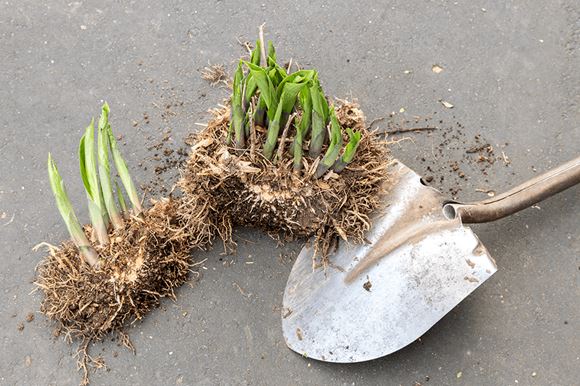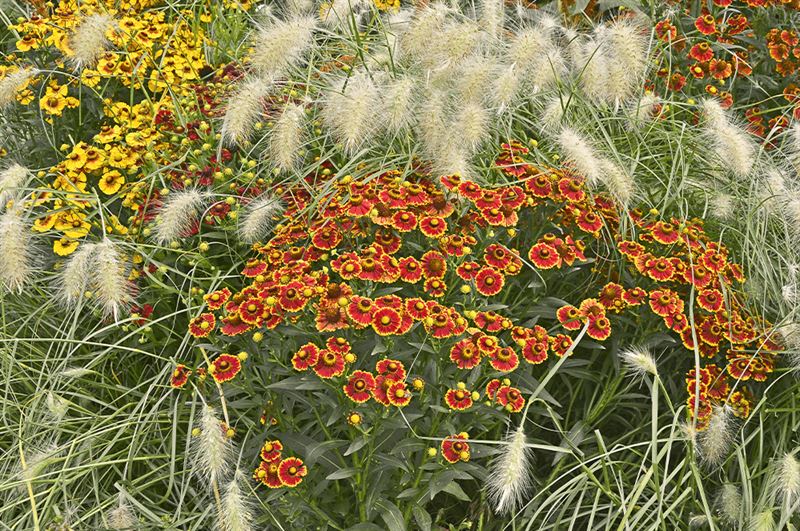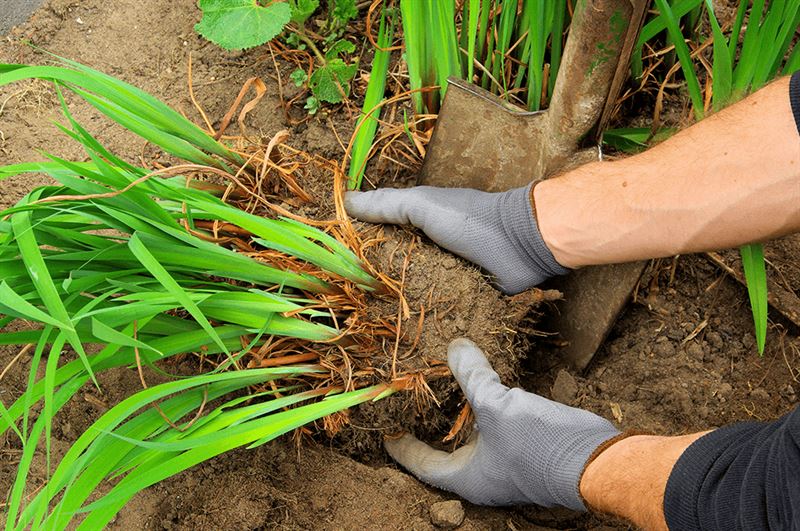
When and How to Divide Perennials
By Kaw Valley Greenhouses, Inc.

The wonderful thing about planting perennials is that, with minimal effort, you get to enjoy your favorite plants as they come back season after season. However, to ensure the longevity of your perennials, it’s essential to maintain them—and one of these tasks that can go by the wayside is to regularly divide them!
When you divide your perennials, you are greatly benefiting your plants. First of all, you are avoiding overcrowding, which in turn will stimulate more new growth and also reward you with bigger, more vivacious blooms. If the perennials you’ve chosen are rapid growers, division is also a way to keep control of their growth rates. And finally, dividing your perennials also provides you with more plants! You can either add them back to your garden or pot them up and give them to friends or family as thoughtful gifts.
Read on to learn all about when and how to divide your perennials.
When to Divide Perennials
Depending on the type of perennials you have, there will be two different time periods to divide your perennials in order to achieve optimal results. The basic rule of thumb is that if you have fall-blooming perennials, you will want to divide them in the spring, and if you have spring- or summer-blooming perennials, you will want to divide them in the fall.
The reason for this is because you want to divide your perennials during a time when the plant is not flowering, which is a particularly draining time in the growth cycle. Instead, allow your perennials to pour all of their energy into renewing the plant’s leaves and roots.
 Fall-Blooming Perennials
Fall-Blooming Perennials
During the spring, your fall-blooming perennials will just be starting to put out new growth and will have stored energy in their root systems, which will aid in their recovery.
When you divide in spring, your perennials will also have the entire growing season to recover before their regular blooming period starts. Plus, your perennials will benefit greatly from the early spring rain showers!
Spring-Blooming Perennials
When you divide your spring-blooming perennials, the most important thing to do is be sure you time it properly. This is not something you want to leave to the last minute as your perennials’ roots need to become adequately established before it gets cold enough that the ground starts to freeze.
The recommended time period to safely divide your spring blooming perennials is between four and six weeks before a hard freeze. Luckily, there is far less work to be done in the garden at this time than there would be in the spring!
Peonies, in particular, are recommended to be divided in the fall due to their blooming season. Otherwise, if you were to divide them in spring, there is a good chance your peonies will spend too much energy on recovering, resulting in either poor blooms or none at all.
How to Divide Perennials
Now that you have an understanding of why and when to divide your perennials, we can move on to how to divide your perennials! For the purposes of this article, we will be giving a general explanation on how to divide perennials, but it’s important to be aware that each perennial will differ in terms of its root system, growth pattern, and division rate (for example, some perennials may require more frequent division than others).
Before planting anything, it’s always a good idea to research beforehand the needs and requirements of a specific plant so that you choose the right perennial for your garden.
Follow our simple 4 step process on how to divide perennials below:
Step 1: Gently and carefully dig up your perennial, preferably on an overcast day to prevent the roots from getting too dry.
prevent the roots from getting too dry.
Step 2: Loosen the dirt away from the roots using your hands to avoid breakage of the root system.
Step 3: Separate the plant into smaller sections (depending on the type of perennial you’re working with, you may do this with your hands or using a sharp, clean knife), and ensure there are 3-5 shoots with healthy roots per section.
Step 4: Replant or pot up the divided sections and water thoroughly. If you don’t intend to plant them immediately, the sections need to be kept well-watered and in the shade until they can be planted. The key is to minimize stress on the plants during the process.
It really is just as simple as that! Keep in mind that when a perennial has been left for too long without being divided, it’s possible that it will start to look less lively and vigorous. If you find your perennials aren’t coming back like they used to—or perhaps you just want to change your garden’s look—then it might be time to divide!

